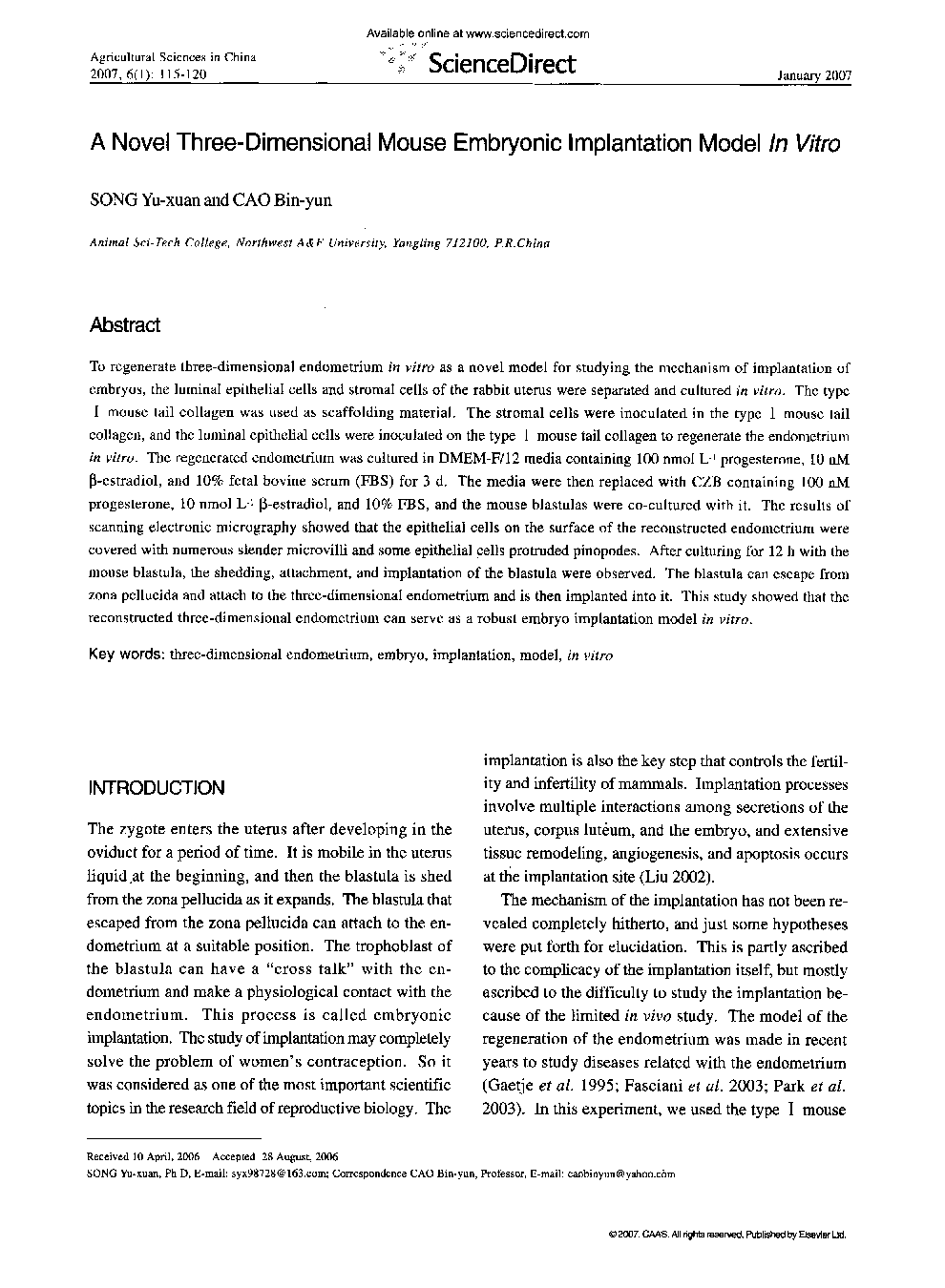| Article ID | Journal | Published Year | Pages | File Type |
|---|---|---|---|---|
| 4490942 | Agricultural Sciences in China | 2007 | 6 Pages |
To regenerate three-dimensional endometrium in vitro as a novel model for studying the mechanism of implantation of embryos, the luminal epithelial cells and stromal cells of the rabbit uterus were separated and cultured in vitro. The type I mouse tail collagen was used as scaffolding material. The stromal cells were inoculated in the type I mouse tail collagen, and the luminal epithelial cells were inoculated on the type I mouse tail collagen to regenerate the endometrium in vitro. The regenerated endometrium was cultured in DMEM-F/12 media containing 100 nmol L−1 progesterone, 10 nM β-estradiol, and 10% fetal bovine serum (FBS) for 3 d. The media were then replaced with CZB containing 100 nM progesterone, 10 nmol L−1 β-estradiol, and 10% FBS, and the mouse blastulas were co-cultured with it. The results of scanning electronic micrography showed that the epithelial cells on the surface of the reconstructed endometrium were covered with numerous slender microvilli and some epithelial cells protruded pinopodes. After culturing for 12 h with the mouse blastula, the shedding, attachment, and implantation of the blastula were observed. The blastula can escape from zona pellucida and attach to the three-dimensional endometrium and is then implanted into it. This study showed that the reconstructed three-dimensional endometrium can serve as a robust embryo implantation model in vitro.
